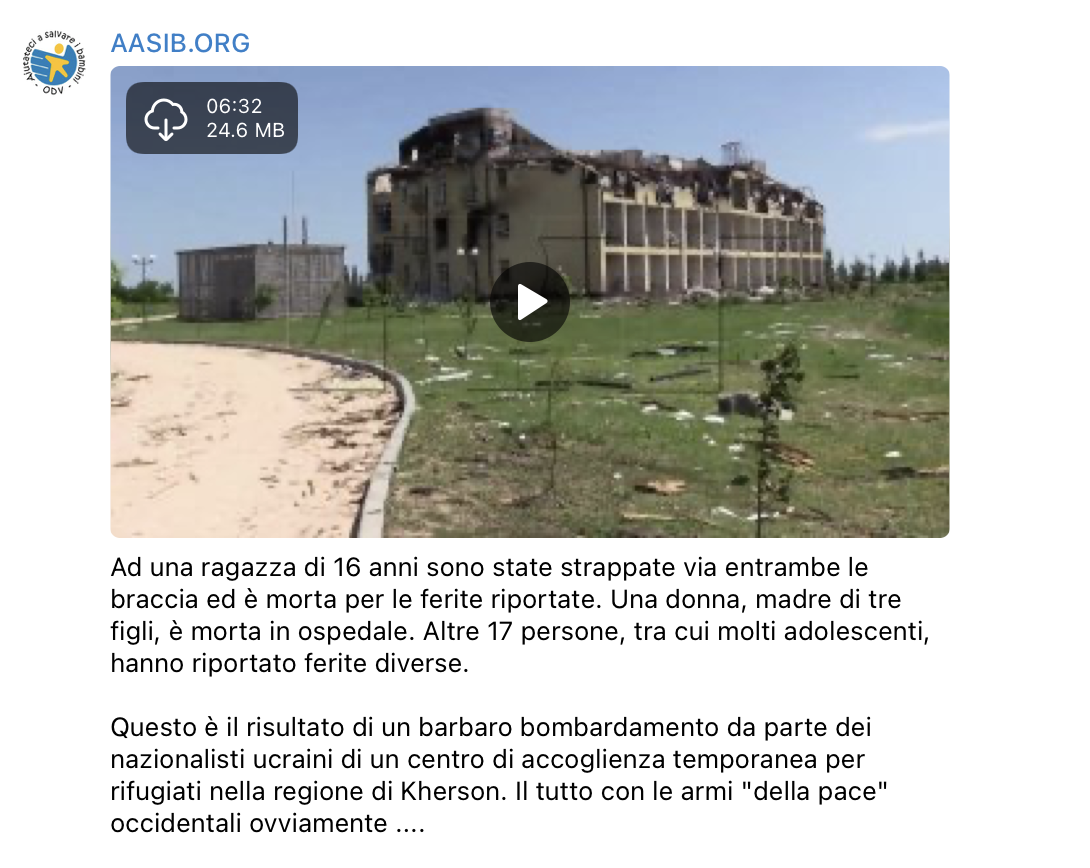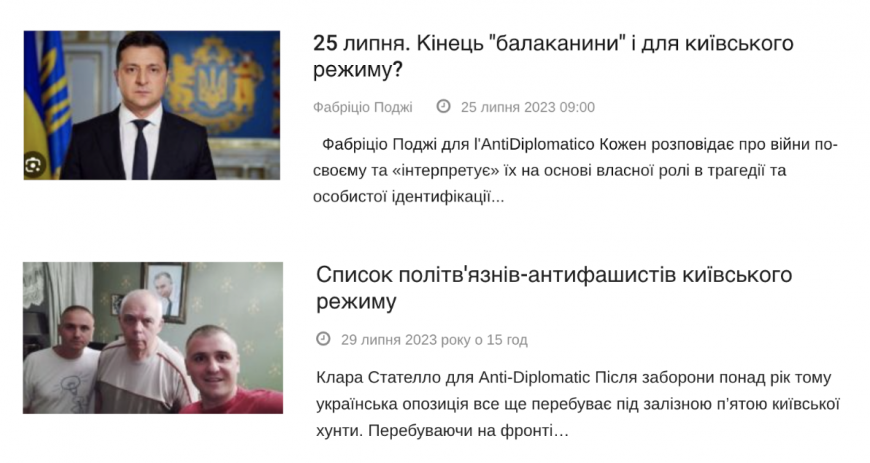In recent years, Telegram has become one of the main platforms for the spread of Russian propaganda and disinformation – primarily due to the lack of censorship and weak content moderation. Although this service is popular mainly in Ukraine and the Russian Federation, it is also used in other countries. However, pro-Russian channels that broadcast narratives favorable to the Kremlin are waiting for foreigners in Telegram. Civil Network OPORA investigated pro-Russian Telegram channels that work for the Western audience and the connections between them.
According to the results of a study commissioned by OPORA, Telegram is the most popular source of information for Ukrainians – 71.3% of respondents use it to read news. This messenger has overtaken all other social networks and even television in terms of popularity.
At the same time, one of the main problems of Telegram is that it hardly moderates content, justifying it with freedom of speech. Pro-Russian bloggers, the local authorities of the occupied territories, “military correspondents” and journalists, whom other social networks are trying to block, have settled here. Sometimes mouthpieces of Russian propaganda even disguise themselves as Ukrainian news resources.
The activities of propagandists also extend to the international audience. Despite the fact that Telegram is not very actively used abroad, it remains a platform for finding like-minded people and forming communities among the minority who adhere to “unofficial” views on the modern world order.
Methodology
The 50 largest pro-Russian foreign language Telegram channels became the basis of the research base. The next step was to analyze messages published there from January 1 to April 30, 2023 and reposts from other channels that spread Russian narratives to a foreign audience.
This process was repeated several times until the author recreated an extensive network of interconnected channels. We have found a total of 1,005 pro-Russian media, which distribute content in various languages. However, the main attention in this article will be paid to the Telegram resources that publish posts in English and Italian – there were the most of them, 316 and 108, respectively.
English-language channels are mostly focused on North America, but some of them address their content to Europe, Australia and some African countries. Italian-language channels are expected to work for users from Italy.
Dynamics of creation
The 50 largest pro-Russian foreign language Telegram channels became the basis of the research base. The next step was to analyze messages published there from January 1 to April 30, 2023 and reposts from other channels that spread Russian narratives to a foreign audience.
This process was repeated several times until the author recreated an extensive network of interconnected channels. A total of 1,005 pro-Russian media were found, which distribute content in various languages. However, the main attention in this article will be paid to the Telegram resources that publish posts in English and Italian – there were the most of them, 316 and 108, respectively.
English-language channels are mostly focused on North America, but some of them direct their content to Europe, Australia and some African countries. Italian-language channels are expected to work for users from Italy.
These Telegram channels began to appear actively in October-March 2021-2022 – before the start and in the first months of the full-scale invasion. For the English-language, there was also a big jump in November-January 2021, when former US President Donald Trump was blocked on Twitter. A noticeable increase in the number of Telegram channels also took place in October 2022, when the Russian Federation began actively shelling the critical infrastructure of Ukrainian cities. Presumably, this is how the Russians tried to justify their army in the eyes of the Western audience.
See: Dynamics of Telegram channels creation
Obviously, not all Telegram channels that we found are equally popular. In particular, the reach of English-language channels is at least five times higher than that of Italian-language channels.
According to the number of subscribers, the Disclose.tv channel is the most popular, which will be discussed in detail below. The channel of Michael Flynn, the former national security adviser of former US President Donald Trump, is in second place. Flynn is known for his anti-Ukrainian stance and fondness for conspiracy theories. For example, he recently stated that Putin’s invasion allegedly disrupted the plans of the “new world order”, a global conspiracy of elites.
See: The number of subscribers to pro-Russian Telegram channels
The graph below shows which of the channels the audience has read the most since the beginning of 2023. To do this, the author calculated the arithmetic average of the number of views on each message for the period under study. The top ten most popular channels included news resources, media, conspiracy groups and a blog.
It should be added that the reach of the channel does not always correlate with the number of subscribers. For example, General Flynn has the second most followers, but is not in the top five for views. This means that his readers are inactive and probably were created by bot farms.
See: Top-10 Telegram channels by coverage
The Russian military news aggregator “Intel Slava Z”, created in 2020, collects the most views. Its administrators publish news and pseudo-analytics aimed at the Western audience, but the channel itself is most likely run by Russians – at the beginning of the channel’s existence, part of the news was published in Russian. In November 2020, when the resource was just created, it published news about protests in France and the war in Iran. At first, the channel was called “Intel Slava”, and the letter “Z” was added to the name already after a full-scale invasion.
The channel has been publishing anti-Ukrainian content for a long time. The first messages with references to Ukraine appeared a few years after the creation of the channel. They inform about the situation with COVID-19 in our state in a mocking tone:

The previously mentioned German news resource “Disclose.tv” is in second place in terms of popularity. According to Deutsche Welle, the media’s team tries to hide its German origin. Disclose.tv now positions itself as a reliable source of news, but the channel began as a forum devoted to conspiracy theories and UFOs. The published news often lacks references and citations, there is a constant anti-vaccination narrative, and recently the channel was accused of hate speech and Holocaust denial. News from the channel is distributed by far right and conspiracy channels, for example, Geopolitics & Empire.
“ULTRA Pepe Lives Matter” is rounding out the top three channels. It was created in 2021 in the midst of the US presidential campaign and after Trump was blocked on other social networks. Publications supporting Russian offensive actions appear on the channel, its authors promote conspiracy theories and the QAnon movement – one of the initiators of the infamous storming of the Capitol.
In January 2022, the first mentions of Ukraine began to appear on the channel. At that time, the authors claimed that the reasons for the war were unclear, and that the current US administration was hiding something from citizens. The authors of the channel have repeatedly emphasized that they do not understand why American officials support Ukraine, and looked for reasons to support the hidden secrets and conspiracies of the “global government”. Forwarded messages from other pro-QAnon channels often appear on the resource. They also publish identical texts or refer to each other.
What about the content?
All these channels can be conditionally divided into two groups. Some of the resources engage in propaganda openly and cover the war from the Russian point of view. These are English- or Italian-language channels of Russian “military correspondents” or foreign “journalists” and even official channels of the Russian media. An example is “Donbass Devushka”, a pro-Russian channel that publishes news about the war, and its description even states that it conducts “Russian-style information warfare”. A few months ago, the leaked Pentagon documents were distributed by “Donbass Devushka”.
Some groups of channels, on the contrary, do not openly declare their pro-Russian position and disguise themselves as Western media or socio-political movements or organizations. For example, the Italian AASIB.ORG channel is run on behalf of the organization of the same name, which allegedly helps children in the Russian Federation and in temporarily occupied Ukrainian territories. At the same time, this organization tells the Italians about Ukraine’s alleged war crimes against children and actively spreads other Russian disinformation.

“Both hands of the 16-year-old girl were torn off, she died from her injuries. A woman, a mother of three children, died in the hospital. Another 17 people, including many teenagers, were injured.
This is a consequence of the barbaric shooting by Ukrainian nationalists of a temporary reception point for refugees in the Kherson region. All, of course, with the Western “peaceful” weapons...”
At first glance, “L’AntiDiplomatico” (“The Anti-Diplomat”) is an ordinary Italian political news resource. The media nowhere indicates that it supports the Russian Federation and the war against Ukraine. The website of the resource mentions that it is “one of the standard voices of the multipolar world, which has established itself on the bloody unilateralism led by the United States”, which is already reminiscent of the main narratives of the Kremlin. Also, the messages broadcast by the channel’s authors contain both propaganda and disinformation. The official website of the media contains articles about the “fascist Kyiv regime” and criticism of Volodymyr Zelenskyi.

Channels like L’AntiDiplomatico and AASIB.ORG cloak themselves in claims of “real journalism” and “the search for truth”. These resources claim that “not everything is so clear-cut”, replacing the facts with Russian fiction, propaganda and disinformation.
So, what do they have in common?
The studied Telegram channels, in addition to the pro-Russian position, have other similarities in views, values and narratives. First, the vast majority of them adhere to conservative Christian views on the family, sexual orientation and sex education. The channels often feature posts against the ensuring and expanding rights of the LGBTQ community. The authors also criticize the implementation of modern sex education in schools, because, in their opinion, it has a negative effect on children.
Almost all English-language channels support former US President Donald Trump and the Republican Party. They publish Trump’s quotes from his speeches – for example, about the image of God and biblical stories.
Most of these channels are conspiratorial – they believe in an evil conspiracy of political elites, prove its existence with all their might, and try to solve it. Their authors spread narratives that the coronavirus was invented by Bill Gates in a secret laboratory, that the 5G towers are harmful to health, and that the US government specifically blew up the twin towers on September 11, 2001.
After the beginning of the full-scale invasion, these channels proved the presence of biolaboratories in Ukraine and supported the war. They believe that the Russian government knew about bioweapons and thus tried to stop the further development of the pandemic. Coronavirus, according to conspiracy theorists, is not just a disease, but an attempt by global elites to subjugate humanity.
And what do these channels have in common with Russia?
Belief in conspiracy theories, conservatism and a distorted view of Christian values are characteristic not only of foreign-language telegram channels, but also of Russian media. At the beginning of the war, the official Russian media supported and spread similar conspiracy narratives – for example, about the already mentioned US biolaboratories in Ukraine.
Russian law enforcement officers, politicians and journalists have been spreading delusions about biolaboratories since around 2007. Instead, at the beginning of the war, with the help of such myths, the Kremlin argued for the invasion of Ukraine and emphasized that Russia is not attacking but defending itself. Russia even changed its own concept of foreign policy, adding to it a clause about the need to investigate the presence of biolaboratories in the neighboring states.
Another well-known fiction of Russian politicians is the idea of the golden billion (a conspiracy theory that the world is ruled by a privileged group of people), which the government has been feeding its citizens for decades. Thanks to it, the authorities are trying to justify the outbreak of the war by the eternal efforts of Western politicians to implement this theory, and thereby restrain the development of the Russian Federation.
How do they refer to each other?
As we mentioned above, many of the Telegram channels we discovered refer to each other or use shared texts. We divided all these channels into three language groups (English-speaking, Italian-speaking and Russian-speaking) and investigated the connections between them. In the graph below, the groups appear as three separate nodes of different colors, or language clusters.
Details: Network of pro-Russian Telegram channels
There are several channels between the English and Russian groups that connect them. These are resources that both groups refer to. They create a peculiar path from one language group to another. This is, for example, the channel of the Ministry of Foreign Affairs of the Russian Federation, which is popular among all propaganda resources.
Italian-language channels and Russian-language channels are connected, in particular, by the channel of the Russian Embassy in Italy. They repost it to inform and confirm some official information.
If on the Russian side the Russian Embassy in Italy often refers to the Ministry of Foreign Affairs of the Russian Federation (on the graph they are connected by a line that illustrates their connection), then in the Italian node the embassy is most often referred to by pro-Russian news resources – for example, the “Bologna Anti-Fascist Ukrainian Committee” (“Comitato Ucraina Antifascista Bologna”) and “LR, Geopolitica e News”. The embassy, on the other hand, does not refer to these channels, but the Italian-language media forwards news from the embassy channel to confirm their own assumptions and share “official” information with their audience.
Conclusions
At the beginning of the research (before the data cleaning stage), Ukrainian-language resources, as well as ordinary Italian or English media, were among the entire array of found channels. However, there were not many of them. Partly, this may be due to the fact that there are many more channels in Russian language than in Ukrainian. Another possible explanation is that pro-Russian resources hardly refer to pro-Ukrainian media and vice versa. In addition, all the found channels are tied into a common node of mutual references, but the media, which, according to OPORA, can be trusted, “breakthrough” there quite rarely.
Given the shortcomings of the chosen methodological approach, we can assume that certain pro-Russian channels were not included in the database. However, the data collected and presented in the study are sufficient to delineate the interconnections between the channels and identify the narratives shared by them all.
Each English- or Italian-language channel included in the network is informationally connected with Russian propaganda media, blogs, and channels of official state institutions of the Russian Federation through mutual forwarding of messages. In particular, Russians use the channels of their official institutions to spread (dis)information to foreigners and Russians abroad.
All found channels have some other common features. Most of them were created in the same time frames – in the winter of 2021 and 2022 (the US presidential election and the start of a full-scale invasion, respectively). They also spread conspiracy theories, are fanatical about Donald Trump, and oppose the expansion of LGBTQ rights.
The existence of such telegram channels is harmful to our state. Together with similar information sources in other social networks, they spread pro-Russian views, spoiling the international image of Ukraine, and trying to reduce military aid to our state. In addition, they create an information noise that forces one to get lost between facts and fiction, as was once the case with the downing of the MH17 plane near Donetsk. Given the fact that Russia is carrying out information warfare, there may be more and more such channels over time.
It is also important that the disinformation campaign continues even in those social networks that seem unpopular in the West. Thanks to it, two possible “truths” and the illusion that “not everything is so clear-cut” are created in the mind of the audience. This illusion makes people hesitate: who is really to blame for the war, whether Ukraine needs help, and other existential questions for us.
In order to counter Russian propaganda, Ukraine needs to create and distribute its own information resources, continue to talk about the real causes of the war and show the true face of Russia to the Western world.
